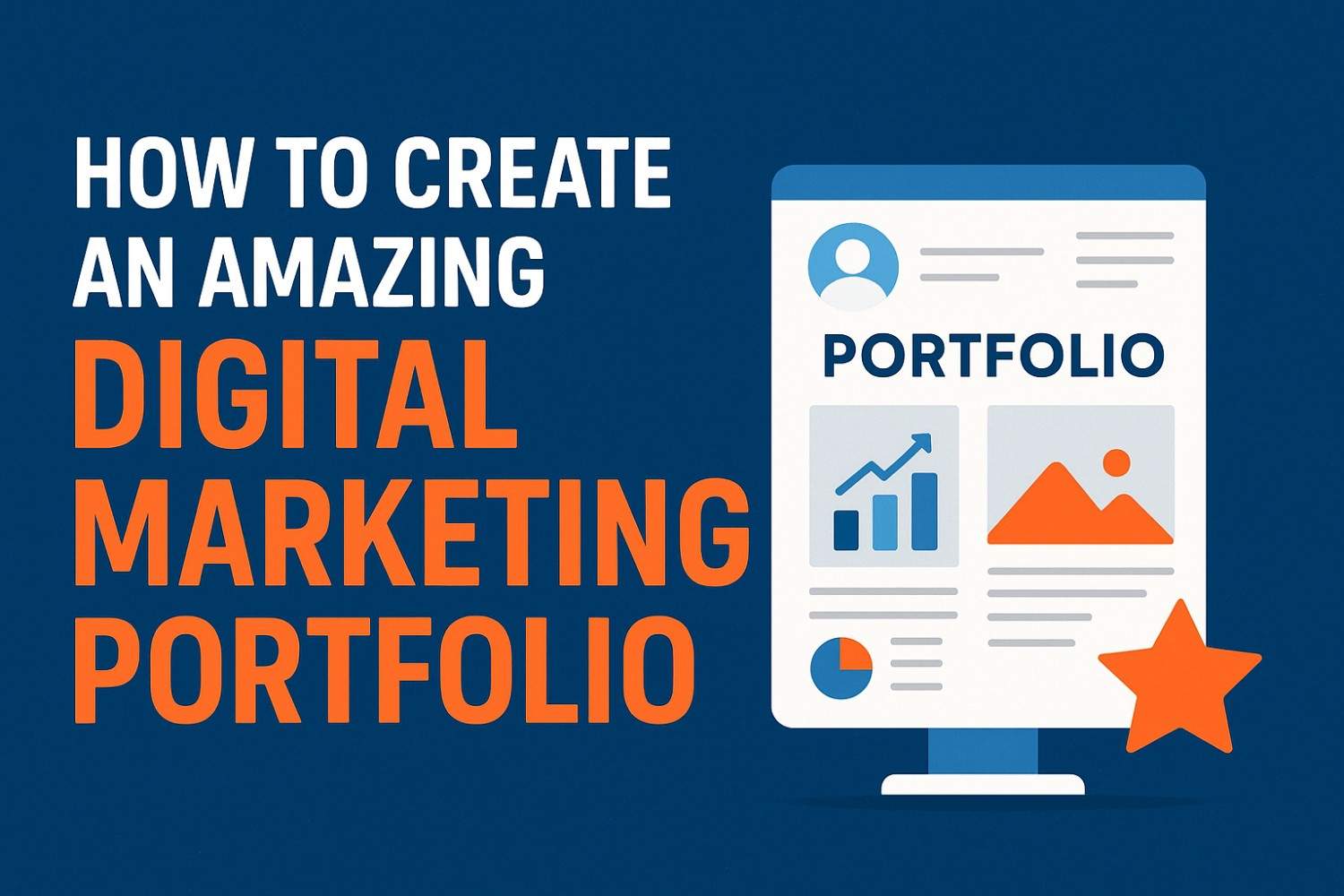How to Create an Amazing Digital Marketing Portfolio That Gets You Hired
In today’s competitive job market, having a great resume isn’t enough — you need proof of what you can do. That’s where a digital marketing portfolio comes in.
A well-crafted portfolio helps you showcase your creativity, skills, and real results, whether you’re applying for your first internship or pitching to clients as a freelancer.
Why You Need a Digital Marketing Portfolio
A portfolio acts as your digital identity. It demonstrates your practical knowledge and the impact of your work.
Here’s why it’s essential:
- Shows employers what you can actually do, not just what you claim.
- Builds credibility and trust.
- Helps you stand out in interviews or client pitches.
- Becomes a personal branding tool to grow your online presence.
What to Include in Your Portfolio
Your portfolio should present both your skills and personality. Include:
- About Section: Brief intro, background, and what drives your passion for digital marketing.
- Resume Snapshot: Education, certifications, and tools you’ve mastered (Google Ads, Meta Business Suite, Canva, etc.).
- Projects & Campaigns: Real or practice-based campaigns — SEO projects, social media content, ad copies, email campaigns, etc.
- Case Studies: Highlight objectives, strategies, and measurable results.
- Analytics & Metrics: Show proof — engagement rates, conversion improvements, or ROI boosts.
- Testimonials: Feedback from mentors, clients, or peers.
- Contact & Social Links: Make it easy for recruiters to reach you.
Steps to Create an Amazing Digital Marketing Portfolio
Step 1: Choose the Right Platform
Use portfolio-friendly platforms such as Behance, WordPress, Wix, or Notion.
You can also use LinkedIn as a professional showcase if you’re starting out.
Step 2: Define Your Niche
Decide what you want to highlight — SEO, social media marketing, PPC, email marketing, or content strategy. Focusing on one or two niches makes your expertise clearer.
Step 3: Highlight Your Best Work
Include 4–6 projects that reflect your range — from ad copy creation to analytics reporting. For beginners, you can use mock projects or live-project assignments from PulsePlay Academy.
Step 4: Present Case Studies Effectively
Each case study should have:
- The Goal (what you aimed to achieve)
- The Strategy (your approach)
- The Execution (tools and actions used)
- The Results (data-backed outcomes)
Step 5: Add Personal Branding
Use a professional logo, consistent color palette, and clear typography. A clean design reflects your digital sense and attention to detail.
Step 6: Keep It Updated
Your portfolio should evolve with every new skill or project. Update it regularly with fresh results and insights.
Tips to Make Your Portfolio Stand Out
- Add interactive visuals like campaign screenshots or short videos.
- Use data and results to validate your success.
- Write engaging project descriptions — focus on storytelling.
- Create a custom URL with your name for professionalism.
- Link your certifications and published work.
Common Mistakes to Avoid
- Including too many similar projects
- Forgetting to explain your role in team projects
- Using low-quality visuals or poor formatting
- Not optimizing for mobile viewing
- Ignoring grammar and content flow
Conclusion
A great digital marketing portfolio isn’t about quantity — it’s about clarity, creativity, and measurable impact.
Start small, stay consistent, and refine your presentation with every project. Your portfolio is your personal brand — make sure it reflects your best professional version.
Frequently Asked Questions (FAQs)
Q1. What is a digital marketing portfolio?
It’s an online collection of your best marketing work, showing your skills, creativity, and results.
Q2. How do beginners build a portfolio without experience?
Start with live projects, case studies from your course, or mock campaigns to demonstrate your strategy and creativity.
Q3. Which platform is best for a digital marketing portfolio?
WordPress, Wix, Behance, and LinkedIn are popular and easy to customize.
Q4. How long should a portfolio be?
Keep it concise — 4 to 6 strong projects are better than 15 average ones.
Q5. Should I include academic projects?
Yes, if they showcase relevant skills such as campaign planning, content writing, or social media management.


